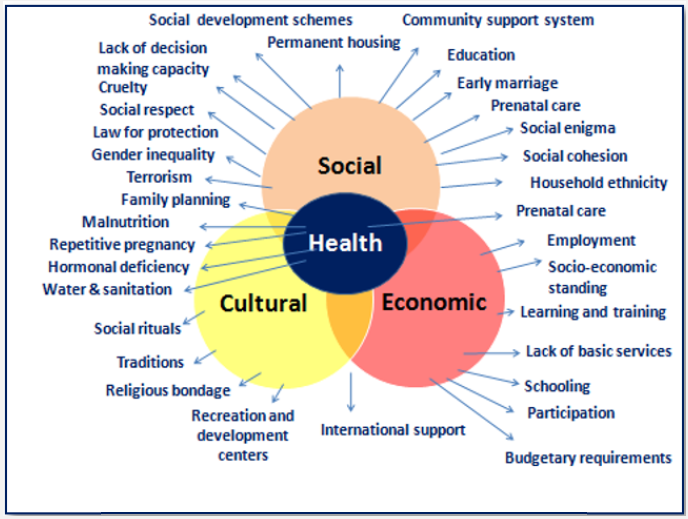Financial freedom for tribal women
Relevance: Sociology: Tribal communities in India: Status of Women
Introduction

For tribal communities, financial freedom translates into financial literacy, with which comes the access to various government safety nets and rights.
The PVTG are often identified by some common characteristics such as their dependence on pre-agricultural modes of living like hunting and gathering, geographical remoteness of their natural habitations and persistent maintenance of isolation from the rest of the world.
Being exposed to dangers from the wildlife; suffering from water supply problems; and living in one remote corner of the district has affected the life of this tribe adversely.
Not only do they suffer from abject poverty, but also from the lack of awareness about the government schemes and entitlements.

Status of Tribal Women in India
The tribal women, constitute like any other social group, about half of the total population. The tribal women, as women in all social groups, are more illiterate than men.
Like others social groups, the tribal women share problems related to reproductive health. When primary and secondary subsistence activities are counted, women work more than men.
Status of women varies in different societies. The conceptual framework to analyse women’s status comprise the seven roles women play in life and work: – parental, conjugal, domestic, kin, occupational, community and as an individual.
In order to appraise the social status of women in these diverse ecological areas, the findings have been divided in to subsequent categories: –
(a) a girl; daughter; a unmarried woman;
(b) a married woman;
(c) a widow;
(d) divorcee; and
(e) a barren woman. Role of women is not only of importance in economic activities, but her role in non-economic activities is equally important.
The tribal women work very hard, in some cases even more than the men. All the tribal societies in the study area are patriarchal in which men dominate in public sector.
However, in their own world women have a freedom, and a self-expression. With the onset of development programmes economic changes are taking place but tribal women remain traditional in their dress, language, tools and resources, because they grow food crops rather than cash crops.
Modernisation is bringing changes, which affect men and women differently. India as a whole is characterised by sharp gender disparities, although women’s status varies considerably by region.
On virtually all frontiers of human societal pursuits-economic, educational, scientific, legal, political, official, political and religious sphere Indian women suffer profoundly.
For all time there are socio-cultural factors, which validate for the status of women in particular society. It is always culture (a set of collective experiences of ideas, norms, values and beliefs associated with a people) with its gender role inequalities and socialisation (the intricate process through which culture is transmitted from one generation to another) determines the position of women in a society.
Gender roles are socially constructed. The family structure in India is patriarchal, patrilocal and patrilineal. Patriarchy denotes a culture of power relationship that promotes man’s supremacy and women subjugation.
It encompasses institutional endorsement of man’s ascendancy within the family and other social structures. It justifies the normative process pertaining to the recognition and sustainability of his dominance in society.
Consequently a boy is looked upon as the perpetuator of the family line, and a girl ‘a bird of passage’. The Indian family organisation makes discrimination between the sexes.
It promotes a hierarchy of classification in which man centred issues take dominance where as women derive their personalities from their fathers’, husbands’, brothers’ and sons.
With a secondary status, women play but a submissive role in social life. Despite several economic, political and social changes, women, are still far behind. One of the most unflattering statistics concerning India’s girl child shows that the preference for a son runs across rich as well as poor households, educated as well as illiterate families.
Widespread use of modern technology, a joint failure of medical ethics and failure to shed concept of a male heir has pushed female foeticide to high proportions.
Female foeticide is just one side of the vast anti-women behavioural range in India. The tragedy is that even women, who have the choice, opt for a male child. They feel that only with a birth of a son, they will achieve higher status.
CONCLUSION
In tribal communities living in some of the most remote corners of the country, financial freedom also translates into financial literacy with which comes the access to various government safety nets and rights, leading to an opportunity for a more productive and prosperous life.
While we celebrate the 74th Independence Day during one of the most distressing times in our recent history, a focus on creating financial freedom for the most vulnerable sections of our society may help them become more resilient towards such shocks and help them break free from poverty.
For more such notes, Articles, News & Views Join our Telegram Channel.
Click the link below to see the details about the UPSC –Civils courses offered by Triumph IAS. https://triumphias.com/pages-all-courses.php

